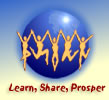Estimating Is an Incredible “Mind Game” (Part 1)
by Adele Sommers
When I give presentations on the topic of estimating, I enjoy engaging the audience in a fun, eye-opening exercise in which I ask the participants to gauge how much time they think it will take to complete three simple tasks.
 The answers invariably range from barely a few minutes to several hours each — and sometimes, even days or weeks! The audience members are always amazed at their range of guesstimates for three seemingly “no-brainer” activities. The answers invariably range from barely a few minutes to several hours each — and sometimes, even days or weeks! The audience members are always amazed at their range of guesstimates for three seemingly “no-brainer” activities.
A wide spectrum of results emerges regardless of the participants’ backgrounds. I’ve noticed that the estimates by credentialed project managers with plenty of experience often diverge as much as — or even more than — those of people with no formal estimating experience at all!
So, when faced with a new set of tasks to estimate, why should our predictions vary so wildly?
One explanation is that estimating seems to involve four fascinating factors:
- Formulaic aspects
- Psychological aspects
- Social influences
- Organizational politics
Let’s look at these factors one by one. (This article, Part 1 of a two-part series, covers the first two of these factors, below.)
Formulaic Aspects
Formulaic aspects include the range of methods and arithmetic calculations we can use to derive our estimates. We can think of these as the more mechanical aspects of estimating.
What does a “range of methods” refer to? Well, especially when an endeavor will be all new to us, we can use multiple estimating techniques to help us predict the effort more precisely. Those techniques include, but are not limited to, using records of past experience, top-down projections, and bottom-up task analyses.
 From a past experience point of view, when we have performed a task repeatedly — and have recorded the actual time it takes for future reference — we can have greater confidence that our estimates for similar tasks will be accurate. This assumes that the future tasks will have similar requirements and will also occur under comparable conditions. It also assumes that we will be referring back to our historical database to consult our previously recorded timekeeping data. From a past experience point of view, when we have performed a task repeatedly — and have recorded the actual time it takes for future reference — we can have greater confidence that our estimates for similar tasks will be accurate. This assumes that the future tasks will have similar requirements and will also occur under comparable conditions. It also assumes that we will be referring back to our historical database to consult our previously recorded timekeeping data.
 From a top-down point of view, we could draw general conclusions about an entire project by using a previous project for comparison. To account for any expected differences in the scope or the difficulty, we could simply adjust the complexity level up or down. For example, future Project B might appear to be about 200% more complex than prior Project A because there will be twice as many deliverables. This kind of estimate can give us a ballpark idea of the effort. From a top-down point of view, we could draw general conclusions about an entire project by using a previous project for comparison. To account for any expected differences in the scope or the difficulty, we could simply adjust the complexity level up or down. For example, future Project B might appear to be about 200% more complex than prior Project A because there will be twice as many deliverables. This kind of estimate can give us a ballpark idea of the effort.
 From a bottom-up point of view, we could perform a detailed task analysis, and then add up the hours of all of the tasks to be performed. If we’re not intimately familiar with the tasks, we can interview the people who are. Even in the absence of experienced performers to interview, we could methodically think through, and make a reasonable attempt to guesstimate, the time that each task and step would require. This approach often exposes nuances that would not be apparent from a higher-level vantage point, and can produce more realistic and precise estimates. From a bottom-up point of view, we could perform a detailed task analysis, and then add up the hours of all of the tasks to be performed. If we’re not intimately familiar with the tasks, we can interview the people who are. Even in the absence of experienced performers to interview, we could methodically think through, and make a reasonable attempt to guesstimate, the time that each task and step would require. This approach often exposes nuances that would not be apparent from a higher-level vantage point, and can produce more realistic and precise estimates.
If we create a set of estimates using two or three of the above techniques, we can then look for the average or midpoint among them. This kind of “triangulation” strengthens our final predictions because we’ve approached the problem from more than one point of view.
But if this were all there were to it, we could simply treat estimating like a mechanical exercise and be done with it! However, the formulaic aspects are not all that come into play...
Psychological Aspects
One psychological phenomenon I believe we encounter when attempting to estimate our time is visualizing the world through a pair of rose-colored glasses. For example, we have a tendency to imagine performing unfamiliar tasks in the smoothest possible way, without snags or interruptions, under perfectly pristine conditions!
To illustrate, when I personally strive to imagine all of the stages, tasks, and steps of something I will be creating or performing, it’s no wonder that I hardly ever estimate 100% correctly, particularly if it’s something new. I’ve observed in myself (as well as in others) a habit of envisioning an idealistic, “ivory tower” workflow, where I can consistently function:
-
 Completely “in the zone” or “in the flow,” and where I can concentrate so deeply that I totally lose track of time Completely “in the zone” or “in the flow,” and where I can concentrate so deeply that I totally lose track of time
- With perfect fluency, such as when I do familiar physical activities for which I no longer need to consciously think about how to perform each step
- Without any of the usual interruptions, delays, or distractions that can impede my efficiency
Speaking of impediments, below are just a few of the many things we can all stumble over or neglect to take into account, even when a new undertaking is a relatively good fit for our expertise:
- Initial training and learning curves
- Typical telephone, text, and e-mail intrusions
- Confusion about the work that will require clarification
- Emotional preoccupation with related or unrelated matters
- Fatigue, illness, hunger, pain, restlessness, and other biological distractions
- The time it takes to mentally “shift gears” from one set of activities to another
- The need to overcome writer’s block or perform other “getting ready” exercises
- Discovering that aspects of the work are more complex than they initially seemed
- Time constraints and scheduling demands that split our time inefficiently, and thus require us to repeatedly stop work and later rethink where we left off
 And when facing a new challenge that is well outside of our expertise, our “sunny-side-up” view of the world may cause us to wonder, “How hard could this be?” And when facing a new challenge that is well outside of our expertise, our “sunny-side-up” view of the world may cause us to wonder, “How hard could this be?”
Without a reality check, we could delude ourselves into a blindly optimistic, overly confident, “of course I can do this!” bravado that either overshoots our capabilities or, at minimum, fails to account for inevitable distractions. Our estimates could then be thrown off in minor to major ways.
The bottom line is that although we might sometimes overestimate the amount of time a new activity will take, I’ve observed over many years that on the whole, based on all of the above tendencies, we tend to vastly underestimate our time more often than not — by a factor of 2 or 3!
In conclusion, we’ve just examined two of the four fascinating factors that can produce divergent experiences when we estimate anything from individual tasks to entire projects: the formulaic and psychological aspects. Stay tuned for Part 2 to continue the exploration!
Copyright 2020 Adele Sommers
|


